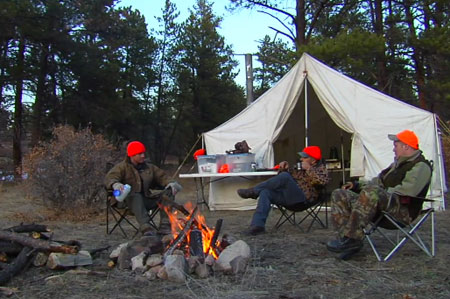Deer hunting season is under way or about to be in many regions, making this a timely moment to take a look at the economic impact of hunting and fishing in your market.
For some people, hunting is a controversial or uncomfortable topic, but there is no denying that it’s a big economic engine, and one that merits an occasional update by financial journalists.
According to the U.S. Fish and Wildlife services 2011 survey summary, some 91 million Americans take part in hunting, fishing or wildlife-watching each year, creating a $145 billion industry that supports suppliers, state governments (via license fees) and conservation efforts. Here’s a link to the PDF of the entire survey, which breaks spending down by type of game, by activity and by type of expenditure, such as food, lodging, clothing, magazines, membership dues, firearms and so on. (It would be interesting to shop with a few readers planning upcoming hunting trips and tally their spending, then compare to the national averages.)
Here’s another study, “A portrait of hunters and hunting license trends,” by the National Shooting Sports Foundation. It confirms that the average age of hunters is rising and is a good peg for a look at what your state, advocacy groups and sellers of equipment are doing to engage younger hunters. Some states, for example, open up wider date ranges for “junior hunters,” as you can see in this example from Tennessee.
Other areas are casting a wider net for prospective hunters, as evidenced by this Idaho Business Review report on efforts to boost non-resident revenue from hunting. The article is rich in detail and a good template for a similar analysis in your area.
The National Shooting Sports Foundation report is worth a thorough read, too, for the way it slices and dices the hunting demographics by affluence, education and other factors; it breaks down most statistics by region and includes information about issues like “hunter churn” and a comparison of hunter income to state averages.
Talk with lodging and hospitality officials about trends in hunting- or fishing-related tourism in your region, and what promotions or marketing efforts are in effect to maintain or boost it. And of course, retailers from Walmart to specialty shops such as Cabela’s and Gander Mountain are good places to look for trends in gear, sales and marketing.
With Thanksgiving looming for birds and celebrants alike, scout around for trends in turkey farms; a number of reports last year mentioned kill-your-own turkey farms that cater to carnivorous consumers.
In addition to spending and suppliers to the actual hunting industry, look at spin-offs from the theme, like game-oriented restaurants, wild game meat processing operations, small-scale producers of game and exotic livestock meats or even taxidermy businesses. Even eateries that don’t specialize in offbeat meats seem to have game nights around this time of year.











